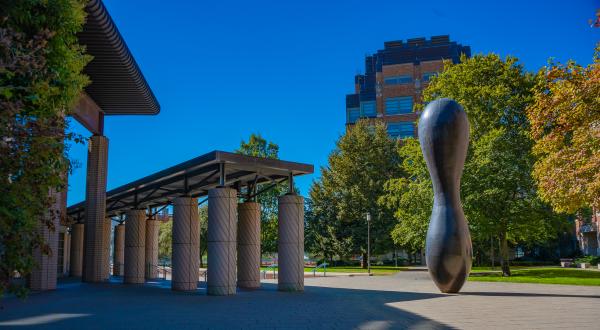Fundamental Physics with Radioactive Molecules
Anastasia Borschevsky

Note to applicants: This is an in-person program.
Disclaimer: Please be aware that, due to ongoing concerns regarding the COVID-19 pandemic, this program may be changed from in-person to hybrid, or to online-only if necessary.
The search for symmetry violation at low energies has become ultra-important in the absence of new physics at the LHC. Without a source of CP violation stronger than that in the standard model, we cannot understand why the universe contains so much more matter than antimatter. With the advent of new experimental symmetry-violation searches with radioactive molecules, we now have the potential to improve existing limits by orders of magnitude. EDMs and other interesting quantities, such as Schiff and anapole moments, are enhanced in certain polar radioactive molecules, both because of nuclear physics (e.g., octupole deformation) and atomic physics (e.g., strong internal electric fields). In addition, such molecules can be tailor made to contain radioisotopes with particular nuclear spins, allowing a comprehensive study of spin-dependent parity violation. They therefore offer a new and unique laboratory for fundamental-physics research.
Awareness of these impressive advances with radioactive molecules, however, is only just now dawning in the nuclear-theory community. As in other kinds of experiments that search for beyond-standard-model physics, an accurate interpretation of the results with radioactive molecules will require reliable theoretical calculations of both nuclear symmetry-violating moments and of various molecular properties. Because symmetry-violating effects grow with nucleon number, the most advantageous systems typically lie in the heavy region of the nuclear chart. With recent rapid advances in ab initio theory and with renewed interest from density-functional theory and new initiatives in molecular theory, now is the ideal time to bring these fields together.
Our aim in this program will be to make theory needs better known to the community, to connect leading nuclear theorists with theoreticians in other relevant fields such as molecular, atomic, and fundamental particle physics, and to facilitate interaction between theorists and those doing experiments. With this program, we hope to foster long-lasting collaborations among theorists in diverse fields and between theorists and experimentalists who are planning next-generation searches. The design of the program will be specifically oriented to give participants from different fields ample time to learn each other’s theoretical approaches, implement new ideas, and generate computational code. Both nuclear and atomic/molecular theory are also critical for planning future experiments, in particular for identifying the best molecules, and our ultimate goal will be to provide guidance for the construction of these new experiments.
PROGRAM FORMAT
We envision the program to have the structure outlined below, though we note it is only a rough guide, and the final program will depend on availability of participants.
- Weeks 1, 2 - Symmetry violation in nuclei: Interplay between particle and nuclear theory
- Week 3 - Connecting nuclear and molecular theory I: Nucleon-nucleon interactions and nuclear many-body methods, electronic structure method
- Week 4 - Connecting nuclear and molecular theory II: Nuclear effects on the structure of molecules
- Week 5 - Precision studies I: Atomic and molecular experiments for nuclear science
- Week 6 - Precision studies II: Future experimental developments and opportunities for community building
It is crucial that the program provides sufficient time for the participants to be working on the identified issues and solutions directly at the INT, and it is important that there are ample blocks of time in which collaborators can focus on implementing ideas. Therefore, we will not regularly plan for more than one one-hour talk per day (or two shorter, related talks back-to-back) in the morning, immediately followed by a discussion session led by either one of the organizers or an expert participant. This will then leave afternoons free for participants to continue with informal discussions and collaborations and to think at a deeper level about the issues and ideas presented in the morning and over the period of the workshop.
